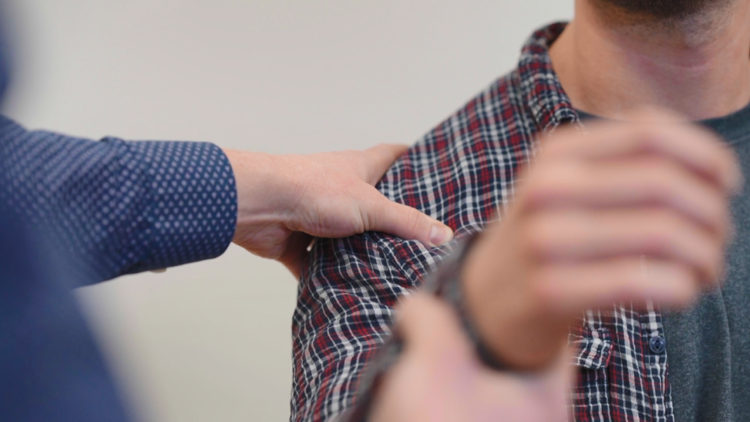
The rotator cuff is a common source of pain or injury in the shoulder. It plays a role in the normal function of the shoulder by contributing to the stability of the joint. It is formed of tendons that attach to the humerus, as well as four major muscles which drape over the shoulder joint. Your rotator cuff allows you to lift and rotate your arm normally. This condition is common and treated often with almost 2 million people visiting their doctor for rotator cuff problems on a yearly basis.
What are the symptoms of a rotator cuff tear?
Listed below are a few common symptoms of a rotator cuff injury, although everyone may experience symptoms differently. These symptoms may also be a sign of a different injury or medical condition so it is important to be diagnosed by a healthcare provider.
- Shoulder pain can be constant or when you are at rest
- Pain or weakness when lifting or lowering your arm
- Limited range of motion
- Clicking or popping
- Muscle weakness
What causes a rotator cuff tear?
A rotator cuff tear is most commonly caused by injury or degeneration such as arthritis. Rotator cuff tears occur when there is damage to the tendon which can happen as easily as falling down or lifting something too heavy.
How is a rotator cuff tear diagnosed?
Tests that may help your doctor diagnose a rotator cuff injury include:
X-Rays: These are usually the first imaging tests performed to see if the reason for your pain is caused by arthritis.
MRI: Magnetic resonance imaging can better show soft tissues, such as the rotator cuff tendon, than X-rays. This test shows your doctor where the tear is, how large it is, and if the tear is new or old.
What are the treatment options for a rotator cuff tear?
Non-surgical treatments include anti-inflammatory medications, rest, ice, corticosteroid injections, and/or physical therapy.
Surgical repair may also be an option, depending on the severity of the injury. Your orthopedic surgeon may recommend surgery to repair a torn rotator cuff if your symptoms don’t go away after conservative treatment, you have a large tear (more than 3cm), or if it was caused by a recent trauma.
Learn more from Dr. Matthew Lilley in this short video covering the anatomy of the shoulder, the causes of this painful condition, and possible treatment options.





